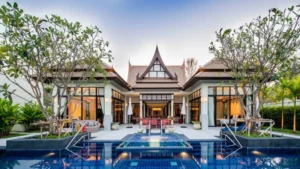Asia, with its rich and diverse cultural heritage, is home to some of the world’s most unique and historic hotels. These exceptional accommodations offer travelers the opportunity to step back in time and experience the charm, grandeur, and traditions of centuries past. In this article, we will take you on a journey to explore some of Asia’s most captivating historic hotels, where pagodas, palaces, and time-honored architecture await.
1. Udaipur, India: The Oberoi Udaivilas
Nestled on the banks of Lake Pichola in Udaipur, The Oberoi Udaivilas is a luxurious hotel that captures the essence of Rajasthan’s royal heritage. This opulent palace hotel boasts intricate architecture, serene courtyards, and regal interiors. Guests can enjoy boat rides on the lake, spa treatments, and the hotel’s lavish Mewar-inspired design.
2. Kyoto, Japan: Hiiragiya Ryokan
In the heart of Kyoto, Hiiragiya Ryokan is a traditional Japanese inn that dates back to the 19th century. With its tatami-mat rooms, wooden interiors, and exquisite kaiseki cuisine, the ryokan offers a glimpse into Japan’s Edo period. The tranquil garden and hot spring baths provide a serene retreat from the city’s hustle and bustle.
3. Bhutan: Uma Paro
Nestled in the Paro Valley, Uma Paro is a boutique hotel that blends Bhutanese architecture with modern luxury. The hotel offers stunning views of the surrounding Himalayas and is a gateway to exploring Bhutan’s rich cultural heritage, including ancient monasteries and fortresses.
4. Mandalay, Myanmar: The Strand Cruise
Exploring Myanmar’s Irrawaddy River aboard The Strand Cruise is a unique experience that harks back to the golden age of river travel. This colonial-style luxury cruise offers guests the chance to visit ancient temples, traditional villages, and historic pagodas along the riverbanks.
5. Seoul, South Korea: RakKoJae Hanok Hotel
RakKoJae Hanok Hotel is a hidden gem in Seoul that showcases traditional Korean hanok architecture. Guests can stay in beautifully restored wooden villas, experience tea ceremonies, and immerse themselves in the tranquility of a traditional Korean courtyard.
6. Luang Prabang, Laos: Satri House
Satri House, set in the UNESCO World Heritage-listed town of Luang Prabang, is a colonial mansion turned boutique hotel. The property’s historic architecture, lush gardens, and vintage decor evoke a sense of old-world elegance. Guests can explore the town’s ancient temples and alms-giving rituals.
7. Beijing, China: The Peninsula Beijing
The Peninsula Beijing is a legendary hotel that combines modern luxury with a historic location. Situated near the Forbidden City, the hotel offers guests a glimpse into China’s imperial past. Its opulent design, Michelin-starred dining, and traditional afternoon tea create a regal atmosphere.
8. Penang, Malaysia: Eastern & Oriental Hotel
Overlooking the Andaman Sea, the Eastern & Oriental Hotel in Penang is a historic colonial-era hotel that exudes old-world charm. Its classic design, seafront promenade, and afternoon tea service harken back to the days of British colonial rule in Malaysia.
Conclusion
Asia’s historic hotels provide an opportunity for travelers to step into the past and experience the grandeur and traditions of bygone eras. Whether you’re exploring the palaces of Udaipur, the ryokans of Kyoto, the rivers of Myanmar, the hanoks of Seoul, the temples of Luang Prabang, the imperial heritage of Beijing, or the colonial elegance of Penang, these unique and historic accommodations offer a window into the rich history and culture of Asia. They not only provide luxurious comfort but also a sense of timelessness that makes your journey all the more enchanting.





